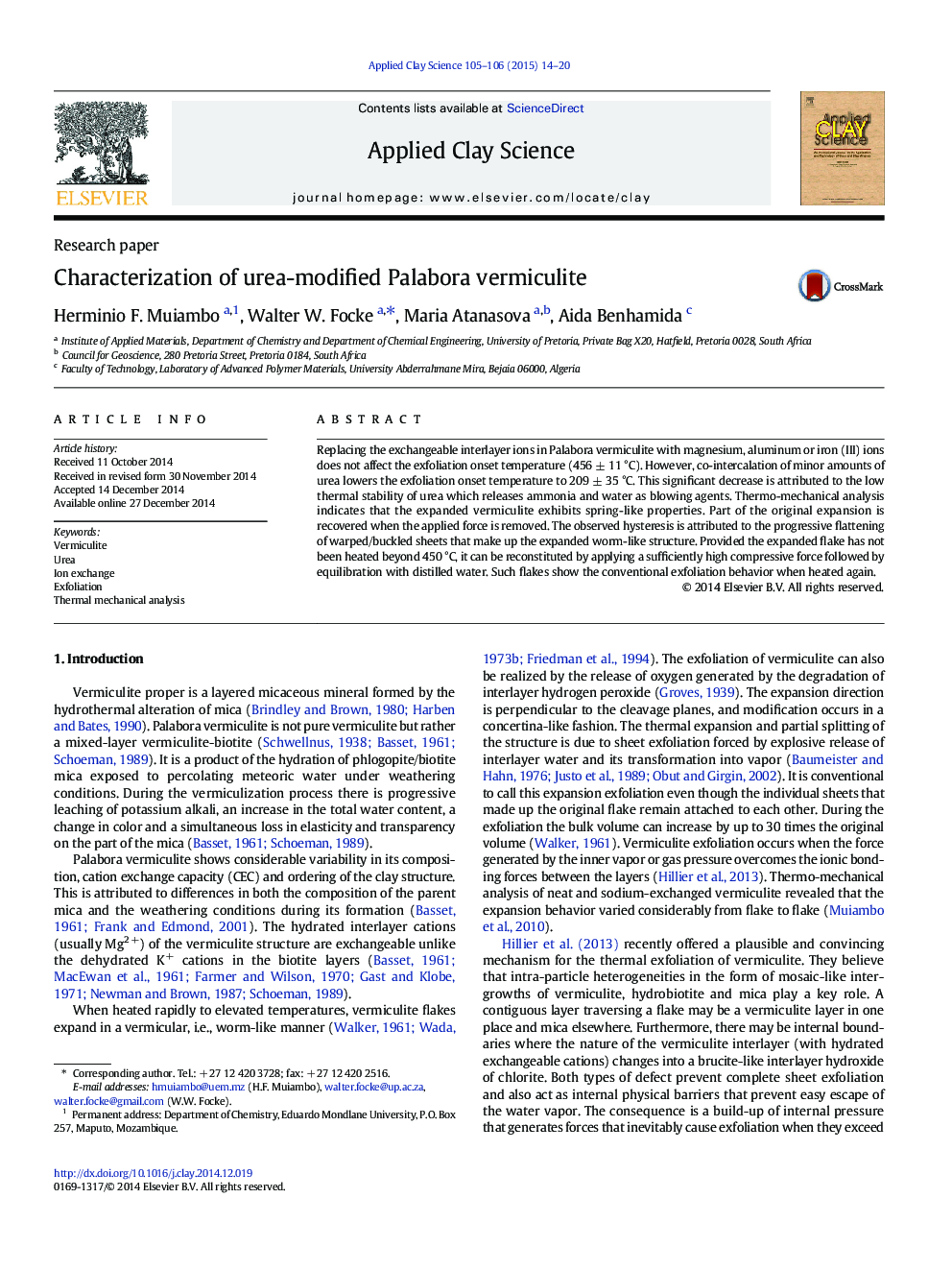| Article ID | Journal | Published Year | Pages | File Type |
|---|---|---|---|---|
| 1694555 | Applied Clay Science | 2015 | 7 Pages |
•Co-intercalation urea reduces the expansion onset temperature of Palabora “vermiculite”.•The expanded “vermiculite” exhibits spring-like behavior but there is some hysteresis.•Vermiculite exfoliation is reversible.
Replacing the exchangeable interlayer ions in Palabora vermiculite with magnesium, aluminum or iron (III) ions does not affect the exfoliation onset temperature (456 ± 11 °C). However, co-intercalation of minor amounts of urea lowers the exfoliation onset temperature to 209 ± 35 °C. This significant decrease is attributed to the low thermal stability of urea which releases ammonia and water as blowing agents. Thermo-mechanical analysis indicates that the expanded vermiculite exhibits spring-like properties. Part of the original expansion is recovered when the applied force is removed. The observed hysteresis is attributed to the progressive flattening of warped/buckled sheets that make up the expanded worm-like structure. Provided the expanded flake has not been heated beyond 450 °C, it can be reconstituted by applying a sufficiently high compressive force followed by equilibration with distilled water. Such flakes show the conventional exfoliation behavior when heated again.
